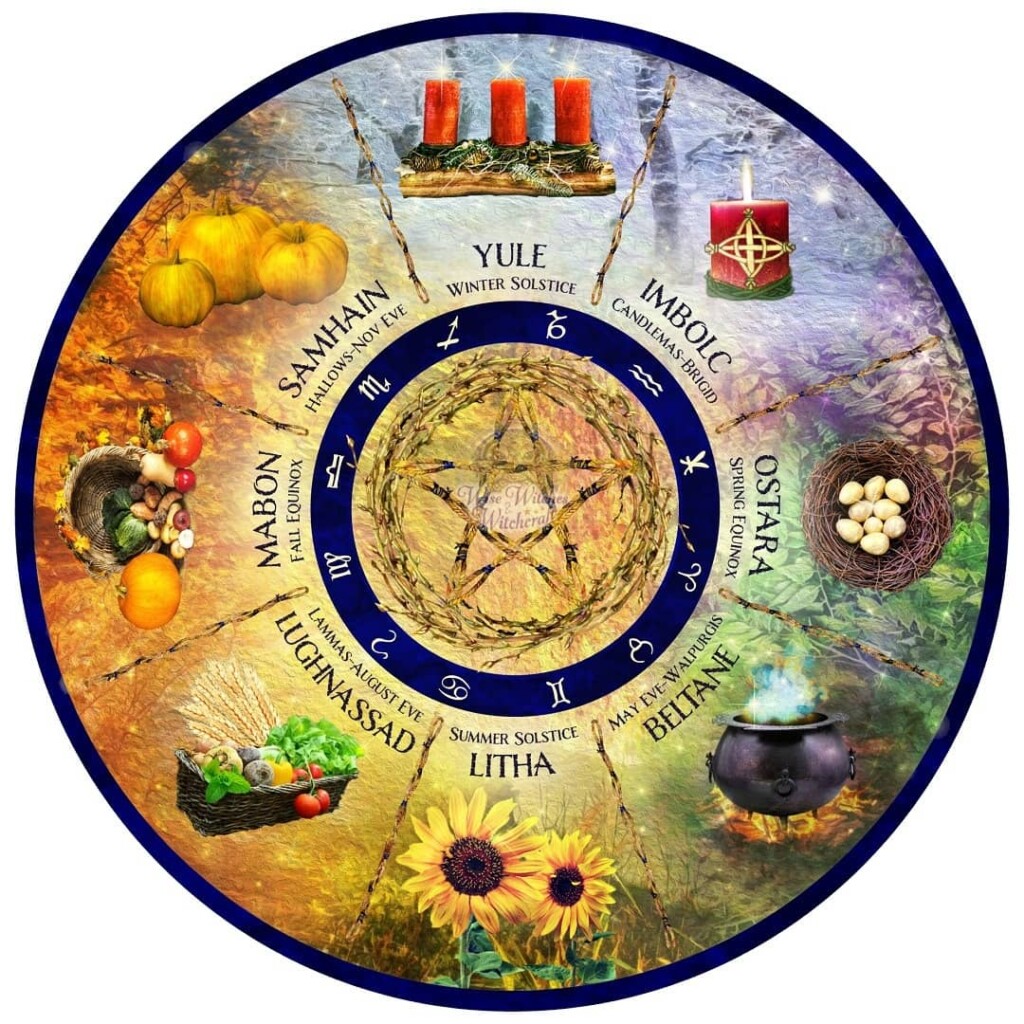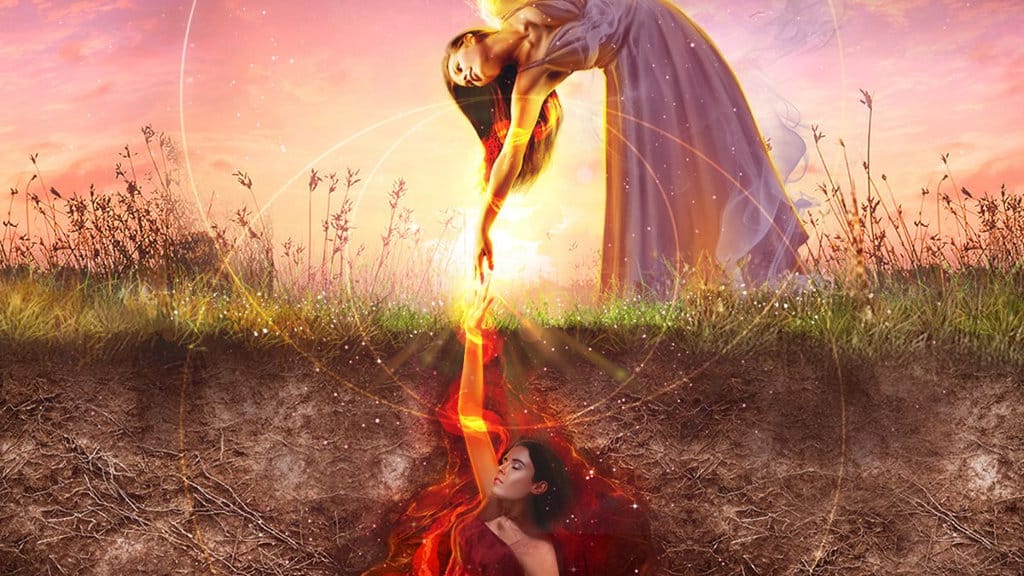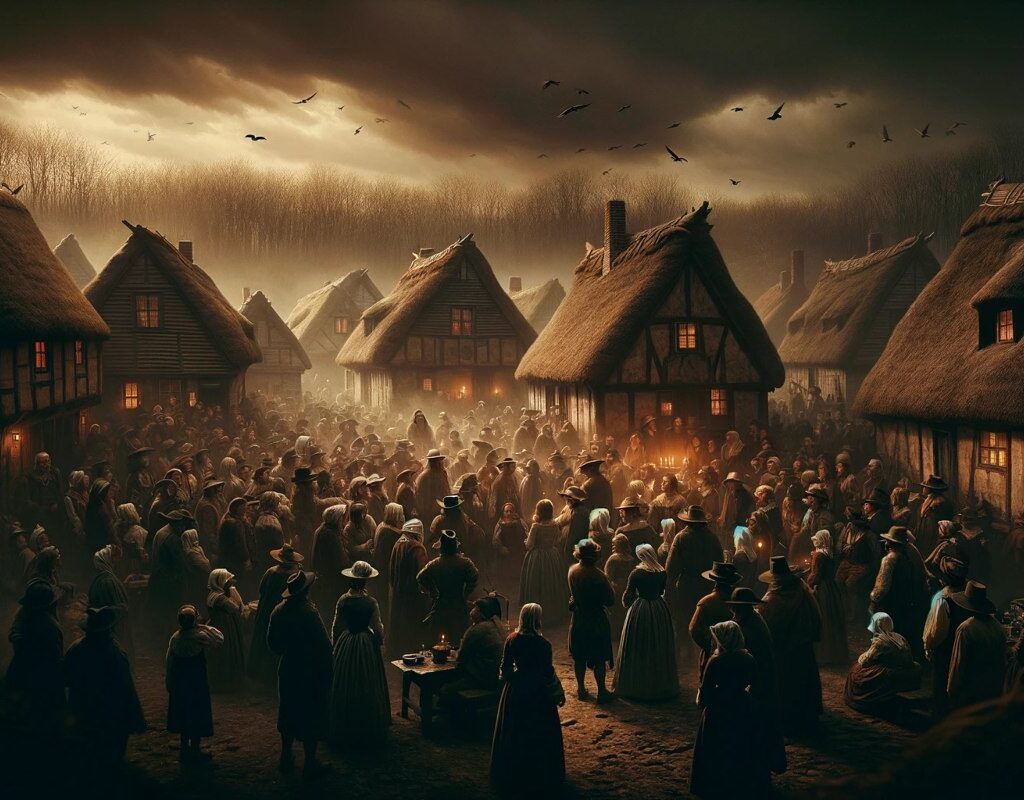Wicca, an ancient pagan religion, celebrates eight sacred holidays known as Sabbats which make up the wheel of the year. In addition to these special days, new and full moons, known as Esbats, are also honored which occur twelve or thirteen times a year.
The Sabbats: The Eight Fundamental Holidays of the Wheel of the Year in Wicca
Sabbats are sacred solar days that occur approximately every six and a half weeks and have profound mythological significance. They represent the annual cycle of the Goddess which goes from Maiden to Mother and finally to Old Woman, as well as the cycle of God, who is born, marries, matures and dies.
In Wicca, weekly prayer is also practiced, although there is no specific day designated for this. The celebration of Sabbats and Esbats is an integral part of Wiccan spirituality, honoring the cyclical nature of life and the connection with the divine in nature.
Samhain: The Annual Halloween Witches Celebration
Samhain, also known as Halloween, is one of the most sacred and revered festivities in the Wiccan calendar. With its roots in agrarian society, this date marked the time when farmers slaughtered leftover livestock in preparation for winter.
With the grain already in storage and the frost underway, farmers could calculate how much meat they would need to feed themselves during the cold months ahead. In hunting societies, hunting became scarcer and the tribe was more dependent on hunters, as plants became dormant during the winter.
But Samhain isn’t just about slaughtering livestock and preparing for winter. It is also a holiday that marks the transition of the souls of the deceased to the other side, as well as the welcome of the souls that will be born in the coming year.
During these celebrations, a rite is held to watch over and let go of the dead, especially those who have died in the previous year. Family stories are told over and over again, in an act of remembering ancestors and keeping their memory alive.
Samhain is considered the time of year when “the veil between the two worlds gets thinner” which means that magic becomes especially powerful and effective. It’s an opportunity for witchcraft practitioners to harness this energy to perform meaningful rituals and spells.
Ancient Rituals in Samhain: The “Silent Supper”
On the Samhain holiday, one of the common practices is known as the “silent dinner”. This tradition consists of preparing a special dinner in honor of those who have died, symbolically inviting them to the table.
An additional plate is placed on the table, filled with food for loved ones who have already crossed over to the afterlife. After dinner, the plate is left outside, so that any creature that wanders nearby can take advantage of it.
The term “mute” originally referred to those ancestors who, obviously, could no longer speak but in the modern evolution of Wicca, “silent dinner” has taken on a quieter and more reflective meaning. The Samhain feast usually consists of tubers and the last fruits of the harvest, in a sign of gratitude and connection with nature.
From a mythological perspective, this celebration commemorates the moment when the Goddess mourns the loss of her consort, the God, while contemplating the birth of her son. In addition, the Goddess is worshiped in her Old Woman aspect, in a symbolic representation of the cycle of life and death.
The “silent dinner” on Samhain is a reminder of the importance of honoring and remembering our loved ones who have died, as well as of connecting with nature and the eternal cycle of life and death. It is a practice deeply rooted in the Wicca tradition and a show of respect and reverence for our ancestors and the sacredness of life itself.
Yule: Winter Solstice Celebration
December 21, the winter solstice marks the time when winter has fully taken hold. It’s a time of rest, stories and sharing skills and traditions.
It is the longest night of the year and among the pagan practices is the burning of the Yule trunk, lit before sunset and kept burning until dawn the next day.
For many Wicans, the sunrise after the longest night is a reason for a meeting. The carefully decorated Yule trees are part of an ancient pagan tradition.
The Yule feast includes roasts, stews and candies and during the two weeks from Yule to January 6, the exchange of gifts takes place.
From a mythological point of view, the Goddess is believed to give birth to the Sun God on the longest night and Wiccans celebrate his birth or rebirth. Some traditions interpret these moments as the celebration of God in the middle of the time of year that belongs to the Goddess, darkness.
Imbolc: The Pagan Celebration of the Spring Renaissance
February 1 or 2 marks the holiday of Imbolc or Immilch, also known as Brigid’s Day. At this time of year, winter still covers the ground but spring is slowly coming. For primitive agricultural societies, this was a crucial time, as it represented the difference between having enough food to survive until spring or facing scarcity.
In the first case, the celebration was prevalent, while in the second, it was better to organize a party and consume the remaining reserves to avoid prolonging hunger.
As the days begin to lengthen and the darkness decreases, it also becomes evident that the cold of winter persists. Survival becomes paramount, even as spring approaches.
Pagans mark this moment with bonfires and the blessing of tools, preparing them for the spring season. This is why Candlemas is also known as the day of Brigid, the goddess of the forge, considered the most suitable for blessing tools.
In other societies, Imbolc coincides with the birth of new lambs which leads to the name Immilch or the time of new milk. Mythologically, the goddess is believed to have recovered from the delivery of her son, who grows strong ensuring the survival of the community.
Imbolc is also considered a time of inauguration and initiation. For some, it represents the moment when the goddess renews herself as a Maiden after giving birth to her son, symbolizing the rebirth and regeneration that comes with spring…




